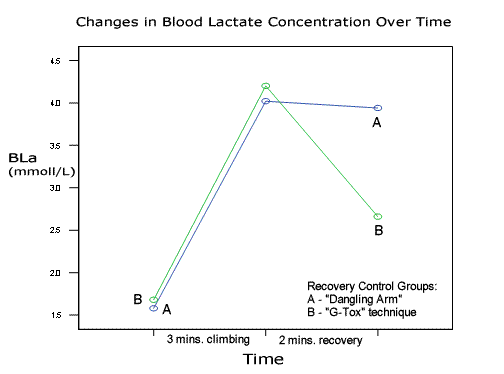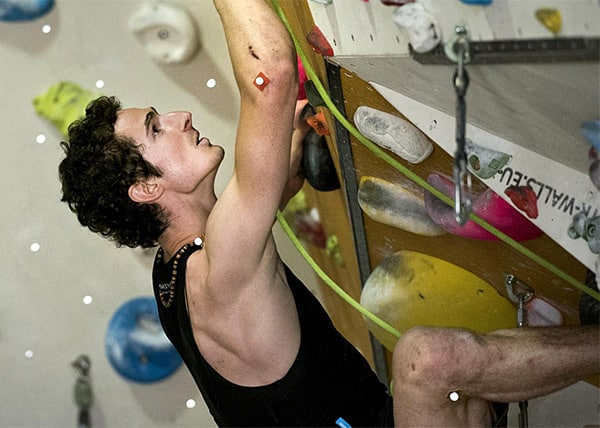Men might possess more brute strength, but female athletes have their own unique set of physiological strengths and skills. Here’s how women can embrace their inner “girl power” to take better advantage of their physiology.
Athletes of both genders often take it for granted that men will always outperform their female counterparts no matter what. There’s some truth to that assumption, sure, but the reasoning behind it is full of flaws.
We’ve been led to believe that women stand no chance against men simply because they’re smaller, weaker, and daintier across the board. But in reality, the differences between genders are much more nuanced. Some of those differences might even give female athletes an advantage…if we’d only get (and give ourselves) the chance to prove it.
Dr. Stacy Sims, an expert in female athlete physiology, has led the conversation on optimizing the athletic experience for women with her research on what actually distinguishes one gender from another and what it takes to close the gap, if not bridge it completely. Her iconic tagline “Women are not small men” points to the fact that being different doesn’t automatically equate to being inferior.
Thanks to Sims and other leaders in the field of female physiology, female athletes everywhere can learn how to own their physiology—not bemoan it. That starts with understanding the key differences between men and women, and how those differences apply to athletic performance. From there, ladies can learn to take advantage of the ways that their bodies function best by tailoring their training tactics around their physiological strengths and struggles.
Ladies, we don’t need to blindly settle for second-string status. There’s an element of complexity to our physiology that men don’t have to take into account. The same things that make us work harder in some ways, though, give us a leg up in others. Research on the female-specific experience in sport has just lagged so far behind that few women have had the opportunity to figure out what makes us unique in the first place. The whole story doesn’t even begin to fit within the scope of a blog post. But consider this your starting point for coming to terms with being more than just a small man and embracing the traits that can take you from short-changed to super-powered given the right approach.
Strength, Power, and Endurance for Female Athletes
The fact that women aren’t small men means that we’re more than just the shrinked-and-pinked Barbie doll version of men. Still, there’s no avoiding the truth: we are typically smaller in comparison. In her book ROAR: How to Match Your Food and Fitness to Your Unique Female Physiology for Optimum Performance, Great Health, and a Strong, Lean Body for Life, Sims likens it to the difference between a Prius and a Mustang. “We start with a smaller engine,” she says. Not only that, but everything under the hood is smaller from the heart to the lungs to the amount of blood circulating through the body. Women simply can’t produce the same effect at the same level of effort since we don’t have the same base resources.
Women also lack the brute strength and power that well-trained male athletes possess. This is due to differences in musculature. Women have a higher percentage of Type I muscle fibers while men have a higher percentage of Type II muscle fibers. Think of Type I fibers as slow-twitch, endurance-oriented muscle and Type II as fast-twitch, power-oriented muscle. The discrepancy explains why women can’t measure up in terms of high-intensity speed, strength, and power. However, it also shows that women can give men a run for their money—literally—as time goes by. The female build translates to greater fatigue resistance and a higher capacity for endurance compared to men.
Going back to the car analogy, Sims reminds us that “the Mustang is going to beat a Prius in a drag race…but that efficient little vehicle will hum along much longer on less fuel, and may even beat the high-horsepower vehicle in the long run.” We thrive on accumulation. Our small-but-mighty (slow-twitch dominant) engines are superior fat-burners that can power us far and long. I’ve noticed this myself in terms of out-climbing my male belay partners pitch for pitch and getting dropped by guys early on in an ultramarathon only to catch back up—or pass them entirely—by the end.
This advantage applies to more than just the short-term. Female athletes peak later than male athletes, and the age at which women reach their peak potential has steadily increased over the last forty years while the ideal age range for men hasn’t budged. So when in doubt, keep going. Your best efforts, and years, are likely still yet to come.

Female athletes bring their own physiological strengths to the table, from endurance to mobility. Photo courtesy of Jeremy Bishop.
Flexibility and Mobility in the Female Body
I remember resenting the fact that girls had to meet higher standards for flexibility than the boys during our quarterly fitness test in high school. In retrospect, I wish I’d seen the challenge for what it was: acknowledgment of an actual female advantage. Research on hamstring and hip flexibility in particular point to a significant difference between muscle stiffness in men versus women. The connective tissues within female bodies tend to be more elastic and pliable than those that make up male bodies, which opens up a wider range of motion for women.
It’s easy to write off flexibility and mobility as “less athletic” than sexier metrics like fast paces and high reps, which may explain why more women don’t hype up their upper hand here. But this is where women can make up the ground that we lose in terms of brute strength and power. The ability to perform a hand-foot match at waist height, for instance, can have the same effect as a more dynamic move that male climbers might make. Mobile joints also allow for more fluidity of movement, which not only conserves energy but also reduces injury risk. Both contribute to the female propensity for endurance and longevity in sport.
Nutrition and Hydration for Female Athletes
Men might get flack for sweating up a storm, but they’re better off for it in a lot of ways. At least they have a way to easily cool themselves. Women tend to sweat less, especially during the high-hormone phases of the menstrual cycle, which makes it tougher for the body to regulate temperature. Sims also mentions in Roar that “women are also more likely to sweat out excess amounts of sodium” when we do sweat, which presents a challenge in terms of electrolyte balance and blood circulation. Women often need to incorporate more sodium in their fueling plans in response.
And speaking of hormonal fluctuations, the complications don’t end with sweat. “Progesterone increases muscle breakdown,” explains Sims, so our catabolic rate increases during high-hormone phases of the menstrual cycle. That’s on top of the muscle breakdown that already occurs during training. We only benefit from the catabolic effect of exercise when we’re able to balance it out with the anabolic effect of recovery. So to prevent excess muscle breakdown that we can’t build back stronger from, proper post-training nutrition becomes non-negotiable.
Sufficient amounts of protein, paired with carbohydrates to improve protein synthesis, goes a long way toward maximizing female athletic recovery. It’s especially necessary with progesterone on the rise, but it can’t hurt at other times too, if only for consistency’s sake. Consistency throughout the entire cycle ensures that you’ll have the extra help with recovery when you need it most.
You’re not off the hook on the other end either. Pre-training nutrition matters just as much for different reasons. No more fasted workouts, ladies! Or fasted anything, for that matter. Sims emphasizes on her blog that kisspeptin, a neuropeptide related to hormone and endocrine health, is more sensitive to stressors like fasting and nutrient deficiency in women than men. Kisspeptin drops in response to fasting, especially before piling on more stress via exercise.
Sims warns that “you’re looking at disrupted menstrual cycles, higher anxiety and stress, impaired performance and often weight gain” as a result. Resist the temptation to go out empty, train for hours without topping off, or ignore hunger cues throughout the day. Your male training partners might be able to get away with it (though even they would benefit from a full tank of gas) but it’s not worth the risk for women.
Hormones make the job of a female athlete harder. Nutrition gets particularly tricky. A mindful, premeditated approach isn’t just helpful—it’s critical. Preparedness turns something that could be a hassle into a competitive edge, though. Think of it this way: all athletes benefit from fueling well, no matter their gender. The female body’s sensitivity to stress keeps us on top of smart and sufficient energy intake. High stakes, high incentive. Men don’t necessarily get the same impetus. Their loss! Bring on the snacks.
Stay tuned for part two on the psychological differences between men and women that play out in athletic performance!
Related Articles:
- Differences Between Male and Female Athletes, Part Two: Psychological Differences That Empower Lady Crushers
- Amity Warme’s Inspiring Approach to Injury Recovery
- How Elite Boulderer Andy Stull Translates Her Training to Sport Climbing
- Paige Claassen’s Tips for Pregnant and Postpartum Climbers
- Heart of a Champion…and Strength of a Female Terminator!
Copyright © 2000–2024 Lucie Hanes & Eric J. Hörst | All Rights Reserved.










